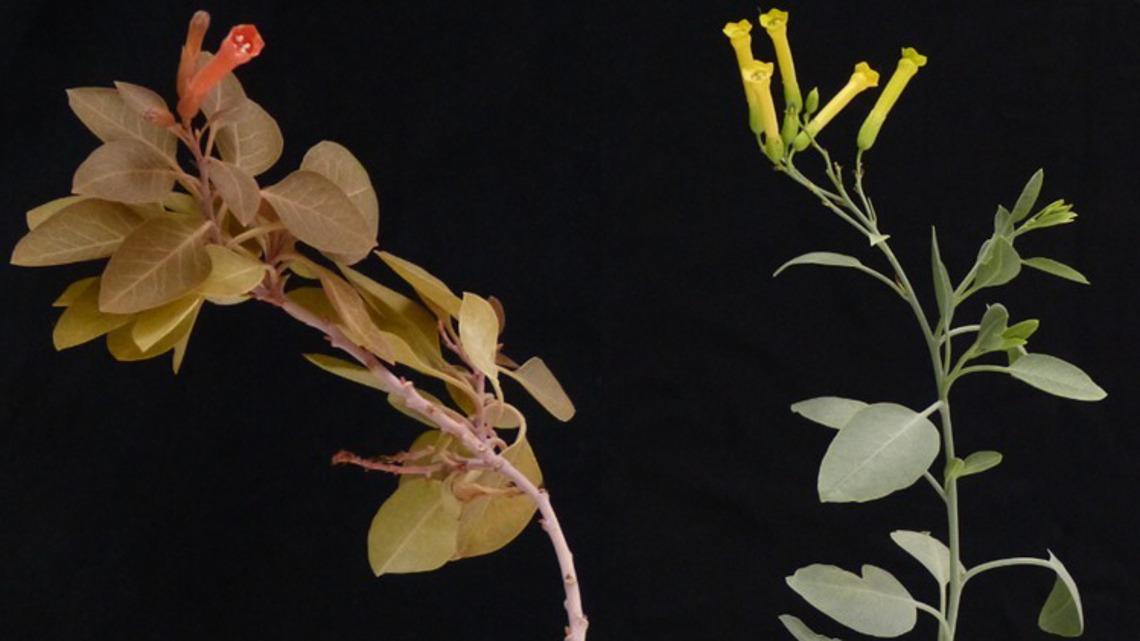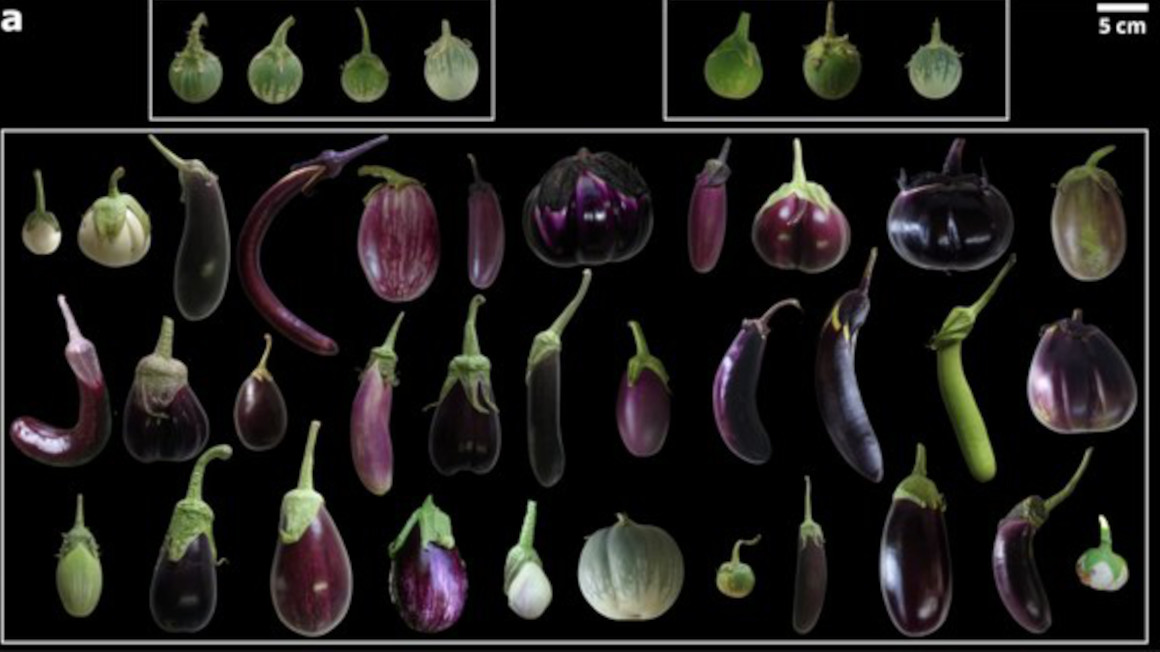Transforming plants into bio-factories
Molecular plant physiologists in Golm managed to engineer the chloroplast DNA of the tobacco plant. Via horizontal gene transfer they were able to produce the carotenoid astaxanthin.

Plants produce a number of metabolites with diverse functions. Many of these metabolites are not only useful to the plant itself, but also have positive effects in humans and animals. However, the extraction of these compounds in sufficient quantities from the naturally producing resources is often laborious and costly. While some metabolites can be produced in bacteria, so far none can be manufactured in plants themselves. A research team at the Max Planck Institute of Molecular Plant Physiology in Potsdam-Golm, lead by Ralph Bock, now found a way to engineer plant cells to produce the coveted metabolites. In their study, published in the journal “Current Biology”, the researchers demonstrated how new metabolic pathways can be introduced into plants to allow the production of high-value compounds.
An coveted pigment for fish farming
For their proof-of-principle study the researchers chose the colorant astaxanthin, an orange pigment and member of the so-called carotenoids. Astaxanthin occurs naturally in some marine bacteria and microalgae. In animals who eat these microorganisms, it protects the cells against stress and diseases. Shrimps and lobsters are orange colored, because of their astaxanthin-rich diet. Salmon and trout also use astaxanthin to protect their tissues from oxidative stress, which causes the pink colour of their flesh. In salmon and trout farms the fish cannot feed on astaxanthin-containing plankton and the flesh of the fish remains white, which is less appealing to the consumer. Therefore, astaxanthin is in high demand as feed additive in fish farming.
Genetically engineering astaxanthin
However, the extraction of the pigment from microorganisms or animals is extremely expensive. Engineering plants to produce the colourant could reduce production expenses dramatically. Hence, researchers are looking into possibilities to integrate the natural metabolic pathway of astaxanthin synthesis into plants by genetic engineering. Inserting the pathway into the DNA of the chloroplast is particularly attractive, as each plant cell contains large numbers of these organelles, which would allow for high production rates of the pigment.
The creation of salmon-pink tobacco
The research group of Ralph Bock has taken the astaxanthin metabolic pathway from a marine bacterium and introduced it into the model plant tobacco. After all genes of the astaxanthin pathway had been implanted into the chloroplast genome, the tobacco plants shows a characteristic orange colouring due to the massive production of the colorant in the chloroplasts: Salmon-pink tobacco had been created.
Despite this achievement, a major obstacle remained: Tobacco is a very poisonous plant. And engineering the chloroplast DNA of the tree tobacco, a close but non-toxic relative of the cigarette tobacco, was not possible. Therefore the research team was searching for novel ways to introduce new genes into other plants, yet again.
The solution: horizontal gene transfer
“In previous grafting experiments, we had already shown that it is possible for plants to exchange chloroplast DNA between species”, explains Ralph Bock. This phenomenon, which commonly occurs in nature without any human intervention, is called horizontal gene transfer. It provides researchers with the opportunity to transfer foreign genes into so far non-transformable plants. After successful grafting of tobacco shoots onto plants of the tree tobacco, cells from the graft site were used to regenerate new plantlets by tissue culture. In this way, single tree tobacco cells that had received the chloroplast DNA from the astaxanthin-producing tobacco plant were regenerated into trees that now made the pigment.
Thus, while direct genetic engineering of the chloroplast DNA of the tree tobacco was not possible, horizontal gene transfer allowed for the introduction of modified genetic information related tobacco plants. In the future, this simple yet elegant transformation technology could also be applied to other important, but currently non-transformable plant species.
jmr


